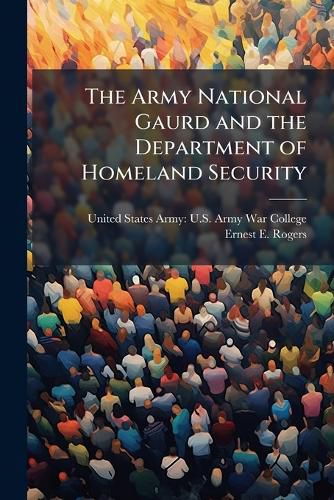Readings Newsletter
Become a Readings Member to make your shopping experience even easier.
Sign in or sign up for free!
You’re not far away from qualifying for FREE standard shipping within Australia
You’ve qualified for FREE standard shipping within Australia
The cart is loading…






This AY-10 USAWC resident student paper argues that the citizen-soldiers of the Army National Guard have lost their focus and original purpose as a State Militia available for disaster recovery operations, assisting law enforcement, and defending the homeland. The author believes that the pressure felt by the current operations tempo to use the Army National Guard as an operational reserve can only be alleviated by moving the Army National Guard from the Department of Defense to the Department of Homeland Security. He asserts that such a move will not cut off relationships developed between the Army and the National Guard, two organizations with a common history, but recognizes that the two organizations should have different primary missions of homeland security (National Guard) and national defense (U.S. Army). He bases his argument in part upon the fact that this realization of similar capabilities but different missions is already working between the U.S. Coast Guard and the Department of Navy.
This work has been selected by scholars as being culturally important, and is part of the knowledge base of civilization as we know it. This work was reproduced from the original artifact, and remains as true to the original work as possible. Therefore, you will see the original copyright references, library stamps (as most of these works have been housed in our most important libraries around the world), and other notations in the work.
This work is in the public domain in the United States of America, and possibly other nations. Within the United States, you may freely copy and distribute this work, as no entity (individual or corporate) has a copyright on the body of the work.
As a reproduction of a historical artifact, this work may contain missing or blurred pages, poor pictures, errant marks, etc. Scholars believe, and we concur, that this work is important enough to be preserved, reproduced, and made generally available to the public. We appreciate your support of the preservation process, and thank you for being an important part of keeping this knowledge alive and relevant.
$9.00 standard shipping within Australia
FREE standard shipping within Australia for orders over $100.00
Express & International shipping calculated at checkout
Stock availability can be subject to change without notice. We recommend calling the shop or contacting our online team to check availability of low stock items. Please see our Shopping Online page for more details.
This AY-10 USAWC resident student paper argues that the citizen-soldiers of the Army National Guard have lost their focus and original purpose as a State Militia available for disaster recovery operations, assisting law enforcement, and defending the homeland. The author believes that the pressure felt by the current operations tempo to use the Army National Guard as an operational reserve can only be alleviated by moving the Army National Guard from the Department of Defense to the Department of Homeland Security. He asserts that such a move will not cut off relationships developed between the Army and the National Guard, two organizations with a common history, but recognizes that the two organizations should have different primary missions of homeland security (National Guard) and national defense (U.S. Army). He bases his argument in part upon the fact that this realization of similar capabilities but different missions is already working between the U.S. Coast Guard and the Department of Navy.
This work has been selected by scholars as being culturally important, and is part of the knowledge base of civilization as we know it. This work was reproduced from the original artifact, and remains as true to the original work as possible. Therefore, you will see the original copyright references, library stamps (as most of these works have been housed in our most important libraries around the world), and other notations in the work.
This work is in the public domain in the United States of America, and possibly other nations. Within the United States, you may freely copy and distribute this work, as no entity (individual or corporate) has a copyright on the body of the work.
As a reproduction of a historical artifact, this work may contain missing or blurred pages, poor pictures, errant marks, etc. Scholars believe, and we concur, that this work is important enough to be preserved, reproduced, and made generally available to the public. We appreciate your support of the preservation process, and thank you for being an important part of keeping this knowledge alive and relevant.